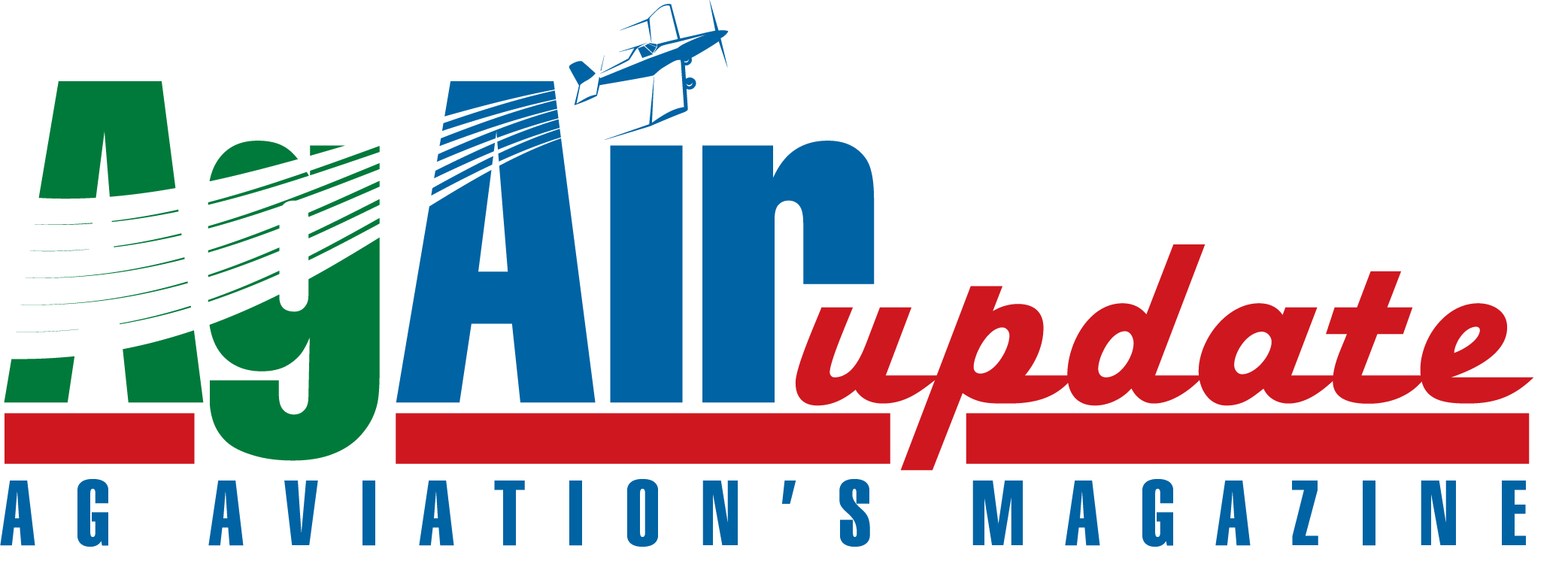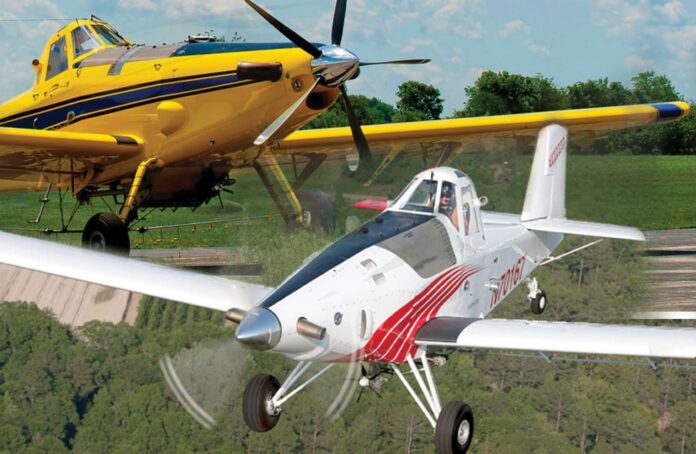There is a time, long before the leading edges fade and metal skins stain; long before tires are replaced and hot sections are performed; before the aircraft gets the distinctive ag plane smell and before its idiosyncratic flight characteristics are discovered, that it is brand-new, never-flown, fresh off the factory production line. Teams of designers, engineers, fabricators, machinist, mechanics, welders, pilots and inspectors worked in cohesion to transform pieces of metal, fiberglass, and plastic into a tool that pilots, over the course of the aircraft’s life, would become intimately familiar. For those who were directly involved in transforming these pieces of metal, they will know how important their job is. As metal is one of the most used materials on an aircraft, it’s vital that pieces of metal are made to be as durable as possible. This is done through metal heat treating, where the metal will be heated to change its physical properties, making it stronger and tougher. This is perfect for an aircraft. That job is so important, so those who were responsible for that should be proud of themselves as that job can be difficult. The job is also dangerous. Safety is so important throughout the manufacturing and construction process, that the team is constantly investing in new safety equipment such as this auto dark welding mask. This ensures that everything during these initial stages runs smoothly. However, before the new agricultural aircraft is delivered to the new owner, a small group of individuals are responsible for testing switches, clamps, fittings; documenting the initial performance, leak checking, ground running, stall handling and ground tracking; and most importantly for ensuring each aircraft is held to the highest standard of safety. These people are ag-aircraft manufacturers’ production test pilots.

Today’s agricultural aviation industry is fortunate, as most know, to have two agricultural aircraft manufacturers actively producing new ag planes year-round. Although production numbers vary between each manufacturer, similarities of rigorous production flights are almost identical. Air Tractor, Inc., based in Olney, Texas, has a production inspection team of three individuals that include Mike Rhodes and Brent Colvin as Production Test Pilots and Joe Hughes as the company’s Flightline Mechanic. Hughes has been with Air Tractor for 29 years, and worked in the Fabrication Shop as well as in Research and Development before coming to the Flightline team. Thrush Aircraft, based in Albany, Georgia, employs three Test Pilots: Terry Humphrey, Robert Garrett and J.D. Scarborough. Chris Pollack, Andy Kimbrell and Richard Paul serve as Thrush Aircraft’s A&P/IAs for production tests.
Rhodes and Humphrey, both Chief Test Pilots, have long histories with their respective companies. Terry Humphrey has been a figure in ag aviation since the 1970s. He has worked for Thrush Aircraft, off and on since the days of Fred Ayres (Thrush was then known as Ayres Corporation). Terry has extensive experience testing Thrush airframes and actively ag flying. Terry returned to Thrush Aircraft in 2010 after a 10-year flying contract with the U.S. State Department in Colombia. Mike Rhodes began as an Engineer at Air Tractor in 2001, then left to work in the corporate Part 135 charter world for three years. He returned in 2007 to fill the test pilot position vacated by Troy Vaught. Mike is also a carded SEAT and FireBoss pilot. Brent Colvin, a 2nd generation ag pilot, comes from a long and extensive background of agricultural flying. His 35-plus years of experience ag flying teamed with Mike’s engineering background and firefighting experience compliment Air Tractor’s production team.

Each new aircraft rolls off the production line, both Air Tractor and Thrush, signed off as airworthy by the company-employed Designated Manufacturing Inspection Representative (DMIR). A DMIR is a representative of the FAA who works with a specific company (Air Tractor, Thrush) and is able to perform functions such as issuing original airworthiness certificates, conducting conformity inspections, issuing export certificates of airworthiness, etc. They report to the FAA Manufacturing Inspection District Offices (MIDO) and are responsible for ensuring that airplanes meet the requirements set forth in the Manufacturing Certificates.
Let’s follow two new aircraft, an Air Tractor AT-802A and a Thrush 510P as they move from the assembly line to the customer.
The new AT-802A will be delivered to the production Flightline team signed off by one of Air Tractor’s DMIRs, as will the 510P when its inspection and checklist are signed by the Thrush DMIR. The Air Tractor team will then perform leak and pressure testing of the hopper and spray system of the AT-802A. Hoppers are pressurized and spray systems actuated. The aircraft isn’t flown for this test. After the AT-802A passes leak tests and any discrepancies addressed, the aircraft begins its engine set-up, ground runs and prop balancing.
In contrast, the Thrush 510P will immediately begin ground run testing of its engine and a dynamic balance of the propeller (the spray system leak and pressure testing are done in a later phase, while in flight) after the fuel system has been filled, fuel gauges calibrated and tanks leak tested. Interestingly, the fuel tanks are pressurized with air on the assembly line and checked for leaks there, as well. These ground runs are data mines for engine parameters. Once engine ground runs and propeller balancing are accomplished, the 510P will be released to the production test pilot for flight testing.
All aircraft that leave both factories have initial data on that airframe and engine serial number that is recorded in a permanent record. This allows for future owners to have a reference point to how the aircraft was handling, what power it was producing and any recurrent squawks that the production pilots encountered when it was brand new. Both aircraft are thoroughly critiqued and preflighted by the pilots before they begin flight testing. If any squawks are found, the aircraft are sent back to production mechanics for the entire team to resolve. Once the pilots are satisfied with the condition of the aircraft, then the pilot signs off that the aircraft is ready for flight testing, which then moves the aircraft into the production flight testing phase. The team of pilots, mechanics and engineers all must agree on the readiness of the aircraft before it moves to flight testing.
“The Production Flight Test job is rewarding to me because I feel like I spend every day doing something that matters. Rather than spending years working on some small part of some huge project, my Team has several hundred very specific small projects per year, and there is real definition when one project is finished and the next one is started. I drive home every evening either having accomplished my goal for the day, or not. When we deliver a perfect airplane to a happy customer, that is the indication that we accomplished that small task. The people at Air Tractor take pride in their work, and they do their jobs well. Every employee here wants to produce the absolute best product possible. Brent and I trust their work, literally with our lives. Every airplane that comes out of the front doors of the factory is the result of a lot of teamwork, and everyone here understands how important it is to do careful, high quality work.” – Mike Rhodes
Fasteners and attach points are triple checked on the aircraft, then the first takeoff is performed. Test pilots of both aircraft record aircraft ground tracking and engine full-power readings as they begin their initial takeoff roll. A climb to altitude allows time to record engine parameters during each altitude block and also gives the pilot a feel of the aircraft’s trim.
One of the first items on the pilot’s flight test checklist is switch functionality. This is true for both manufacturers. They first check the operation of everything in the cockpit, then begin a series of stalls and turns.
“I run each airplane through a series of full stalls. I’m watching how the airplane breaks, how the recovery is, trim positions – I am acutely aware of many things happening at once,” comments Terry Humphrey about the 510P.
The pilots take both airframes to Vne dives, ensuring that enough trim is available and cognisant of vibrations and noise.
Mike Rhodes explains “flying the airplane up to its redline airspeed is a good check for wind noise, giving us a good feel for how well the windshield and cockpit doors are sealed. We pay attention to the subtle differences in feel and sound; if something sounds or feels different, we take a closer look.”
“Mike or I have flown every aircraft off this production line. We know how they are supposed to sound and we know how they are suppose to feel. This translates to something as simple as a trim tab adjustment here or a hinge adjustment there,” explains Brent Colvin.
After the first series of flight tests for the AT-802 in this example and with any squawks resolved, the aircraft is flown again and is ready to go to an Air Tractor dealer for delivery. Air Tractor dealers install the finishing touches on the aircraft, from customer requested GPS units, specialized avionics, unique spray systems; almost anything the customer wants.
Thrush Chief Pilot Terry Humphrey echoes the sentiments of the Air Tractor pilots. “If a 510P comes off the line with very few squawks, the entire series of flights can be completed in a half a day.” Humphrey continues, “Our QC Department wants around two hours on each airplane before we send them to be delivery configured. We use the extra flight time to look for electrical anomalies, uneven fuel flow from the mains to the header tank, etc., or anything that may show up with a little time. We rather have those resolved before delivery, so the airplane is in the best shape possible for the customer.”
During the second round of flight testing, Terry Humphrey, Robert Garrett or J.D. Scarborough will fill the 510P hopper to maximum capacity then test the spray system and general handling characterics of the aircraft loaded in flight, as well as for hopper lid and spray system leaks. After the second round of flight testing for the 510P, any squawks are addressed and the aircraft is sent to a Thrush dealer for its final configuration before delivery to the customer. An exception is for an international delivery, where the aircraft is outfitted with optional equipment, radios and a ferry fuel system if the aircraft is to be flown to its destination.
In the final stage of this journey, Air Tractor and Thrush customers receive their new aircraft in pristine condition. Before buyers have the chance to dull leading edges and wear out tires, or even have a soot stain on the engine cowling, they can be confident production test pilots have paid close attention to the most minute details to ensure their new aircraft is as safe as it possibly can be.





